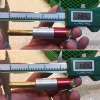Nature Boy
Member
- Joined
- Apr 21, 2015
- Messages
- 8,255
I loaded some .223 this weekend and headed to the range. I had 3 out of 20 CCI BR4 fail to fire in a bolt gun. No light primer strikes and primers seated below flush. Seems like a high rate of failure for a component that rarely fails.
I'm getting close to 10k rounds in my short reloading career and use CCI, Federal and Winchester. I've only had 4 primers fail to fire: the three yesterday and one LR a while back, all CCI.
I'm getting close to 10k rounds in my short reloading career and use CCI, Federal and Winchester. I've only had 4 primers fail to fire: the three yesterday and one LR a while back, all CCI.




